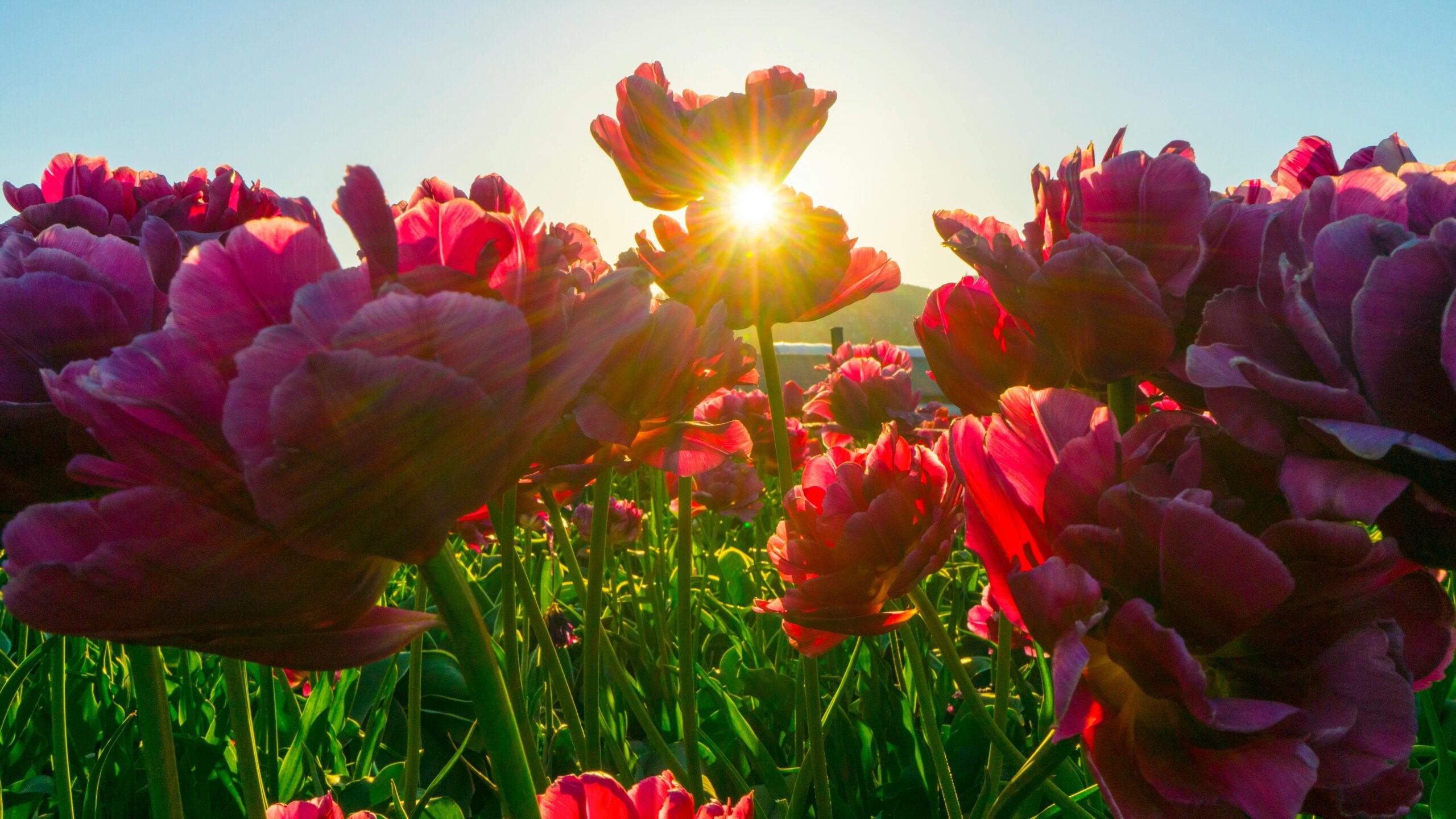Tulips are a vibrant and versatile choice for any garden, offering a myriad of colors and forms to suit various design preferences. Whether you are a seasoned gardener or a novice, planting tulips can transform your outdoor space into a breathtaking display of spring beauty. This article provides a comprehensive guide on tulip planting ideas, covering everything from essential planting techniques to creative combinations that will inspire your garden design. Use this resource to cultivate a stunning tulip garden that will flourish year after year.
Quick Guide: Tulip Planting Essentials
Before diving into creative ideas, it’s crucial to understand the basics of tulip planting. Here are the essentials:
- Timing: Plant tulip bulbs in the fall, approximately 6-8 weeks before the ground freezes.
- Soil: Choose well-drained soil rich in organic matter. A pH of 6.0 to 7.0 is ideal.
- Depth: Plant bulbs at a depth of about 6-8 inches, with the pointed end facing upward.
- Spacing: Space bulbs about 4-6 inches apart to allow for growth.
- Watering: Water thoroughly after planting, but avoid overwatering, as this can cause rot.
Choosing the Right Tulip Varieties
With thousands of tulip varieties available, selecting the right ones for your garden can be a delightful challenge. Here are some popular types and their characteristics:
- Darwin Hybrid: Known for their large blooms and sturdy stems, these tulips are excellent for perennial gardens.
- Triumph: These tulips bloom in mid-spring and are perfect for borders due to their compact size.
- Parrot Tulips: Featuring fringed and feather-like petals, these tulips add a whimsical touch to any arrangement.
- Fringed Tulips: With serrated edges, they provide an interesting texture and are great for mixed plantings.
- Single Late Tulips: Blooming later in the season, these tulips offer longevity and a variety of colors.
Planning Your Tulip Garden Layout
A well-planned layout can enhance the visual appeal of your tulips. Here are some design strategies:
- Layering: Plant taller tulips at the back and shorter ones at the front to create depth.
- Mass Planting: Grouping bulbs in clusters of 10-15 creates a stunning impact.
- Border Edges: Use shorter varieties along pathways or borders for a polished look.
- Mixed Plantings: Combine tulips with perennials and annuals for a dynamic garden throughout the seasons.
Creative Tulip Planting Ideas
Here are five innovative planting ideas that can elevate your tulip garden:
1. Tulip and Ornamental Grass Combination
Mixing tulips with ornamental grasses creates a beautiful contrast. Consider pairing tall grasses like Pennisetum alopecuroides with vibrant tulips. The grasses will sway in the breeze, adding movement to your garden while highlighting the bold colors of the tulips.
2. Tulip Mosaic Gardens
Create a mosaic effect by planting different tulip varieties in a grid pattern. Use contrasting colors to form patterns, such as alternating red and white tulips for a classic look. This design can be particularly striking when viewed from above.
3. Container Gardens
For those with limited space, tulips can thrive in containers. Use a mix of sizes and colors in a single pot for a vibrant display. Ensure the container has adequate drainage and consider adding a layer of gravel at the bottom to prevent water retention.
4. Tulip Pathways
Line garden paths with tulips to create a welcoming atmosphere. Use a mix of early, mid, and late-blooming varieties to ensure continuous color as you walk through your garden.
5. Tulip and Foliage Pairings
Combine tulips with foliage plants like hostas or ferns. The lush green leaves of these plants will complement the vibrant colors of tulips, creating a visually striking contrast. This pairing works well in shaded areas where tulips can still thrive.
Color Combinations and Seasonal Pairings
Choosing the right colors can make a significant impact on your garden’s aesthetic. Here are some effective color combinations:
- Classic Red and White: Timeless and elegant, this combination works well in formal gardens.
- Bold Purple and Yellow: A vibrant pairing that adds energy and excitement, perfect for a cheerful garden.
- Soft Pastels: Combining pink, lavender, and cream tulips creates a romantic, gentle atmosphere.
- Contrasting Shades: Use dark tulips like Queen of Night alongside light varieties like Angelique for a striking visual effect.
For seasonal pairings, consider planting tulips alongside early-blooming perennials like daffodils or hyacinths for a colorful spring display. As tulips fade, late-bloomers like peonies can take their place, ensuring your garden remains vibrant throughout the season.
Tulip Planting Techniques for Impact
Implementing specific planting techniques can enhance the visual appeal of your tulips. Here are some methods to consider:
- Naturalizing: Scatter tulip bulbs randomly in a lawn or meadow-like setting for a natural look that mimics wildflowers.
- Drifts: Plant in sweeping curves or drifts to create a more organic feel, rather than straight lines.
- Interplanting: Mix tulips with other spring-blooming bulbs for a layered effect, ensuring varying heights and colors.
Caring for Tulips: Tips for Healthy Blooms
Proper care is essential for ensuring your tulips thrive. Follow these tips:
- Watering: After planting, water thoroughly and ensure the soil remains moist but not soggy.
- Fertilization: Use a balanced fertilizer in early spring to promote healthy growth.
- Deadheading: Remove spent blooms to encourage energy to be redirected to the bulb for next year’s growth.
- Foliage Care: Allow the leaves to die back naturally for at least six weeks after blooming to nourish the bulb.
Extending Tulip Bloom Time
To enjoy your tulips for as long as possible, consider the following methods:
- Staggered Planting: Plant early, mid, and late-blooming varieties to create a continuous display.
- Climate Considerations: Choose varieties suited to your climate zone to maximize bloom longevity.
- Companion Planting: Pair tulips with other spring flowers that bloom at different times to maintain color in your garden.
Common Tulip Planting Mistakes to Avoid
Avoid these common pitfalls to ensure a successful tulip garden:
- Planting Too Shallow: Ensure bulbs are planted at the correct depth to prevent frost damage.
- Ignoring Soil Quality: Poor soil can lead to weak plants. Amend soil with compost for better results.
- Overcrowding: Give bulbs enough space to grow; overcrowded bulbs can result in smaller blooms.
- Failure to Water: While bulbs don’t like soggy soil, they do need adequate moisture, especially during growth.
- Not Considering Sunlight: Most tulips prefer full sun; ensure your planting area gets at least six hours of sunlight daily.
Inspiring Tulip Garden Examples
Real-world examples can provide inspiration for your own tulip garden:
- Keukenhof Gardens, Netherlands: Known as the “Garden of Europe,” it features millions of tulips in stunning arrangements and designs.
- Longwood Gardens, Pennsylvania: This botanical garden showcases tulips in various themed displays, including formal gardens and naturalized areas.
- Local Community Gardens: Many cities have community gardens that feature tulip plantings, providing a glimpse of how to incorporate them into shared spaces.

